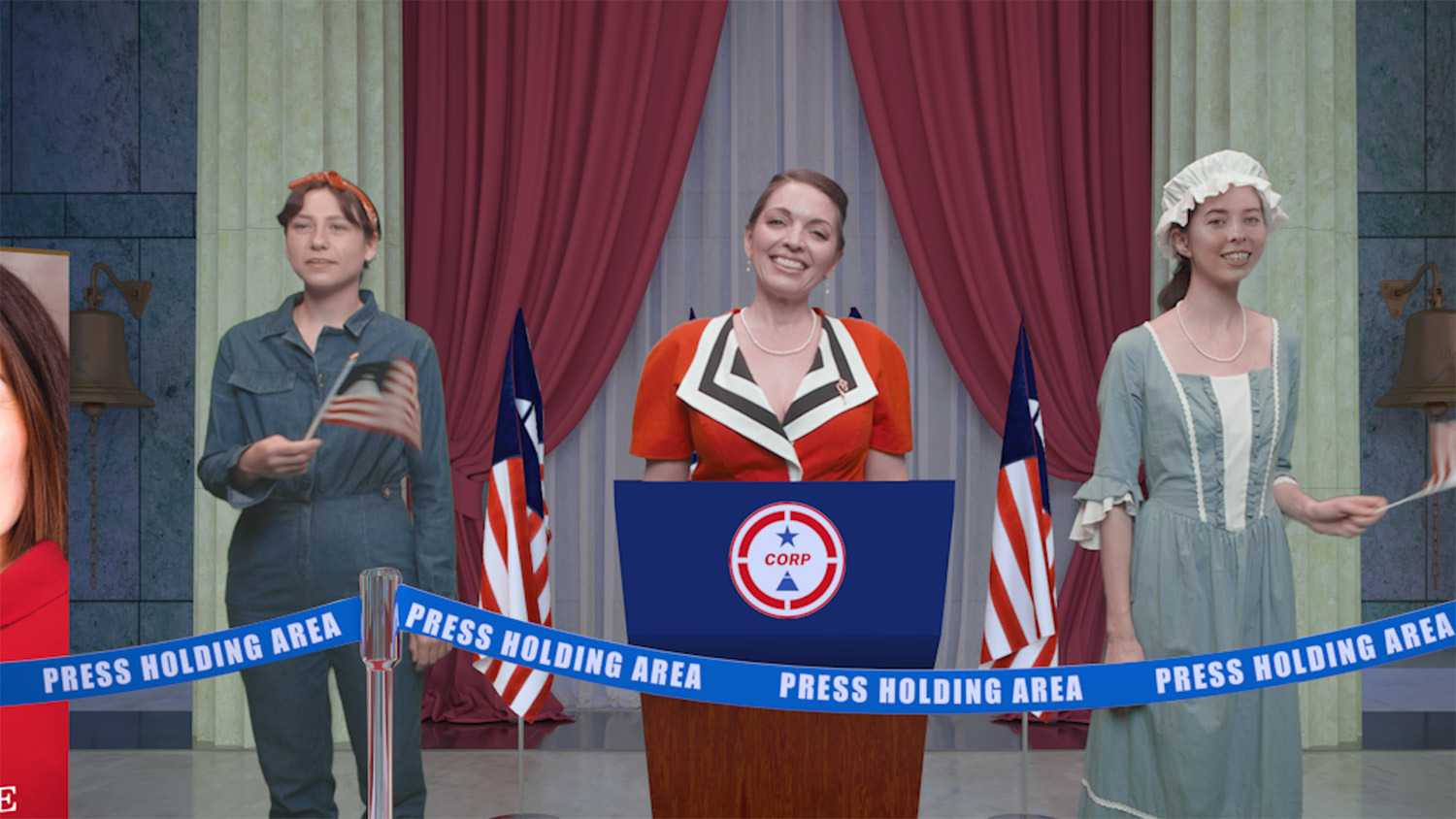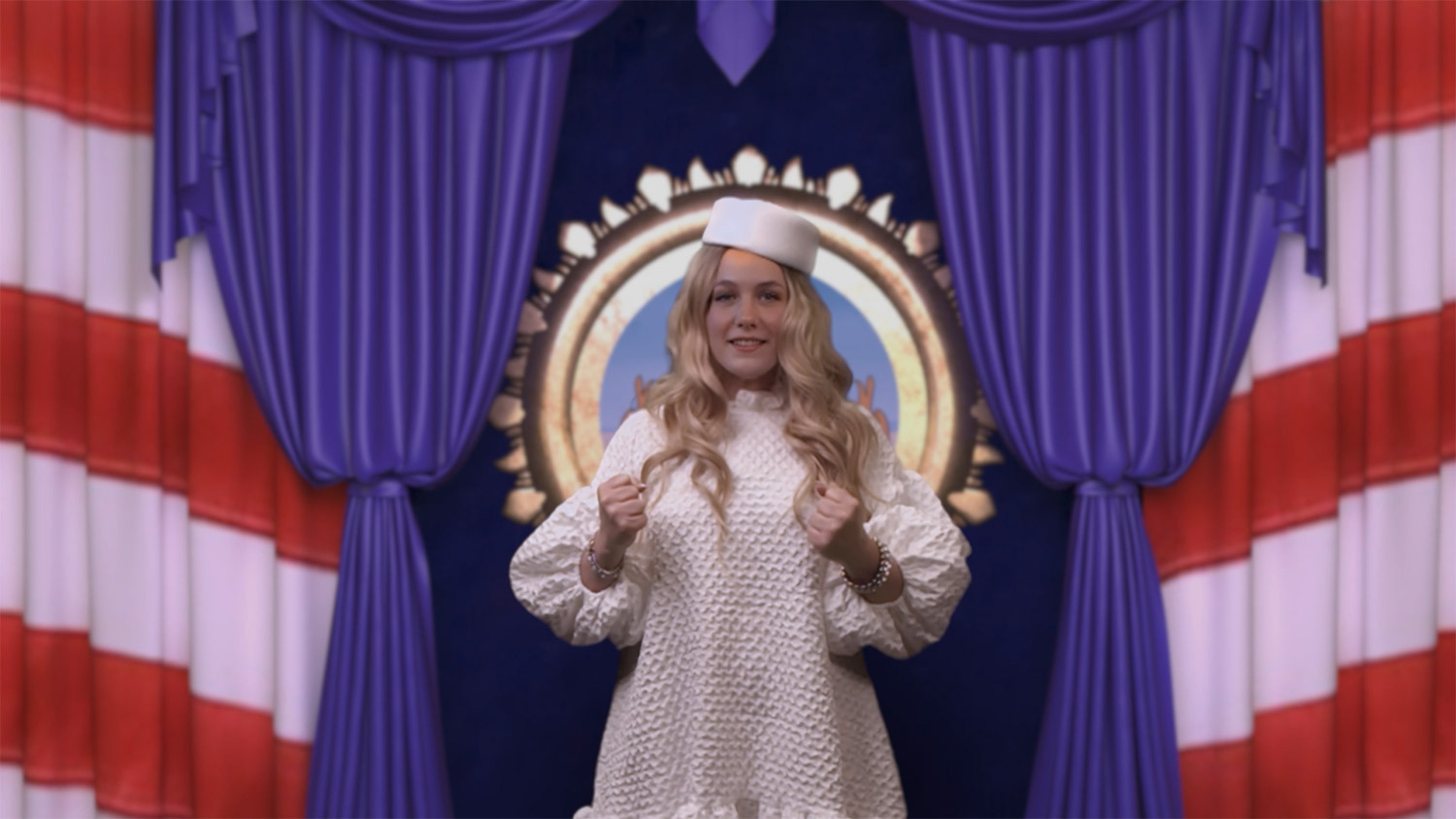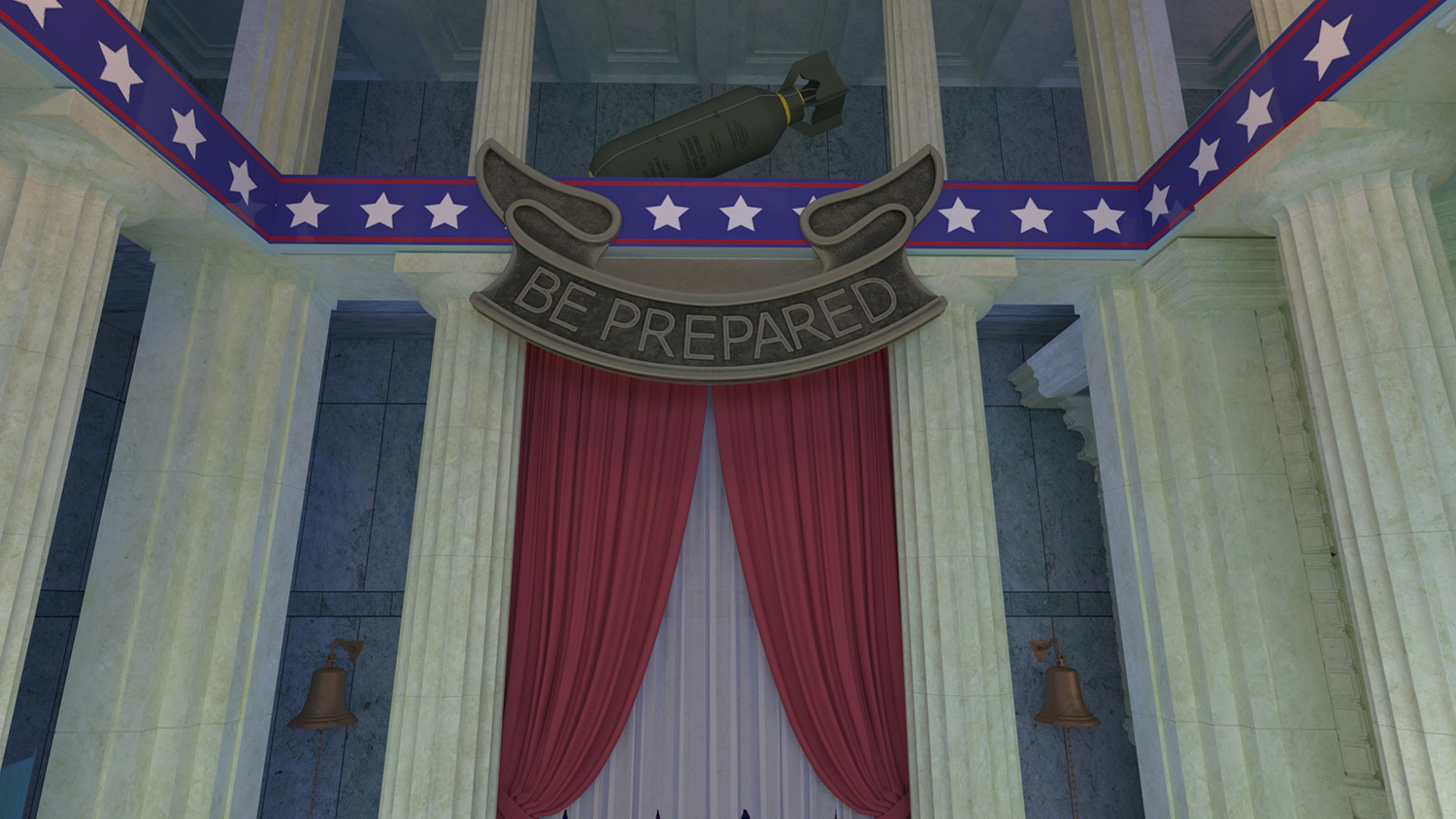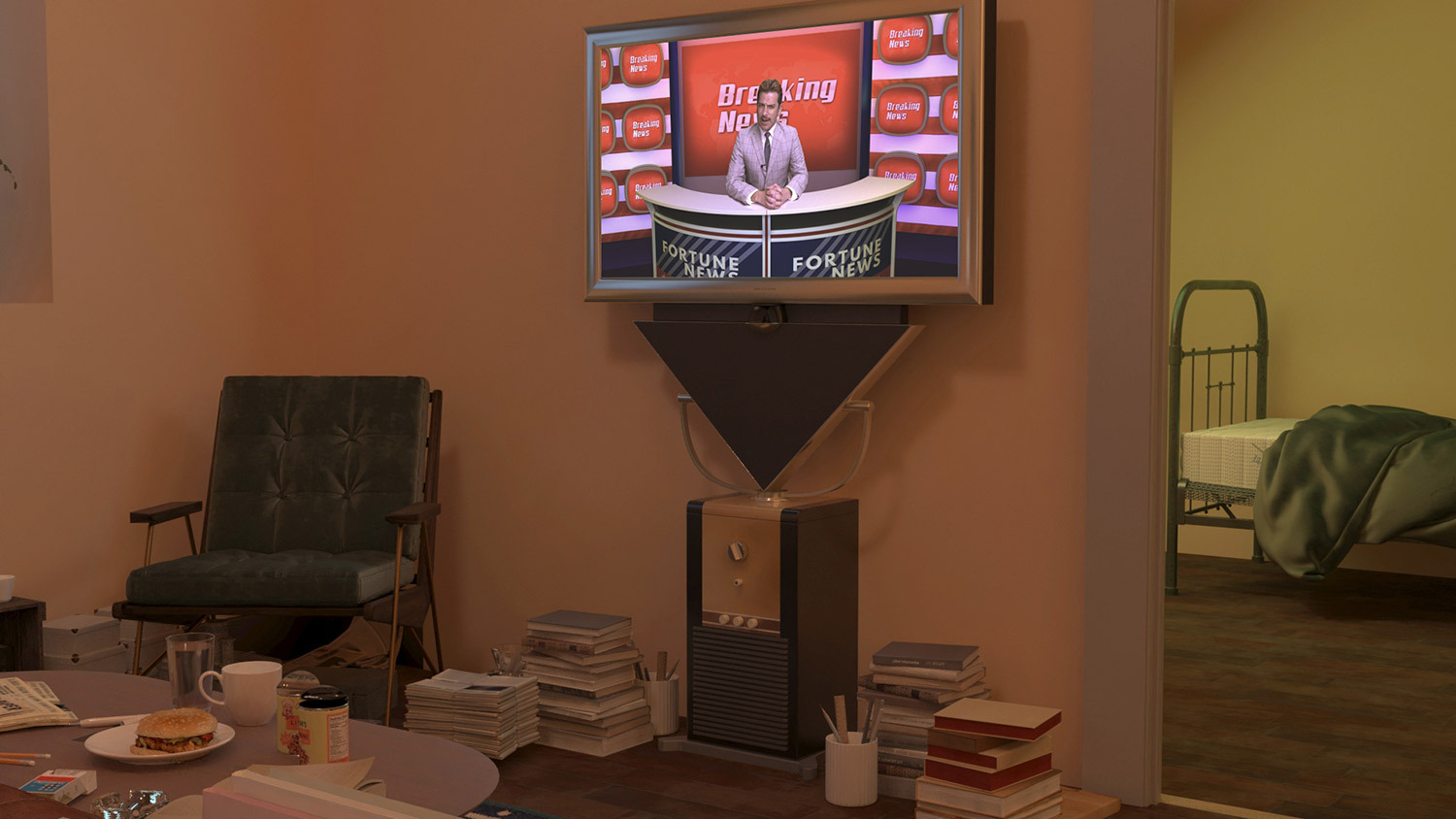Alum Vivian Charlesworth Talks Digital Worlds and Deepfakes

Vivian Charlesworth is an LA-based artist who makes immersive digital and physical worlds. In her films, installations, and immersive experiences, she investigates how stories can be assembled, rearranged, and viewed from multiple perspectives. Charlesworth plays with the scale of spaces and objects to create worlds that are parallel, heightened versions of our reality. She holds a MS in Fiction and Entertainment from SCI-Arc, an MFA in Digital Media from the Rhode Island School of Design, and a BA in Fine Art and Comparative Literature from Sarah Lawrence College. She is currently a Visiting Lecturer in the Media Studies and Art departments at Scripps College and has shown both nationally and internationally at various galleries and museums.
Charlesworth’s most recent artwork, As Real as the Here, is a three degrees of freedom (3 DOF) non-linear virtual reality film that explores an alternative post-911 world in which alternative facts and evolving belief systems literally shift the architectural and social makeup of a city. It’s based on the premise that “in this world, and in the current USA, most Americans don’t know what’s real anymore; truth is just another possibility.”
Using deepfakes and dialogue collaged from political speeches, As Real as The Here investigates what Umberto Eco terms “America’s obsession with simulacra and counterfeit reality.” In this “Fortunocracy,” citizens submit beliefs to an organization called the “Lottery of Beliefs.” When one belief is chosen, it then becomes the collective’s new reality and central rule of law. In As Real as the Here, the audience watches a day-in-the-life of this political process. But what happens if the lottery chooses the belief that the system is “rigged”?
Throughout Charlesworth’s film, the viewer may find themselves confronted by a fountain of the January 6th insurrection bubbling softly in the abandoned mega-mall or seated as an audience member for the President’s fireside chat in a set of the oval office. The audience chooses what order to view the film, and in doing so constructs their own version of the narrative. The viewer is asked to consider how their ideals are influenced and guided by their relationship to politics, propaganda, and media via an engagement with layers of simulation, replication, exaggeration, and fiction.
We are very pleased to have spoken with Vivian about her work, experience studying at SCI-Arc, and how her research and background inform what she’s making today.
What first attracted you to studying in the Fiction and Entertainment program at SCI-Arc?
I had done an MFA at Rhode Island School of Design previously where I was making immersive video installations. I randomly came across the description for F+E and it seemed like it was written for me. I was attracted to the fact that it centered around worldbuilding and storytelling—much of my artwork begins as research/short stories. Additionally, I was interested in pushing the technical side of my practice, and I liked that F+E struck a balance between skill building, storytelling, and career preparation in the entertainment industry.
How do you bring your specific perspectives and skills you developed during this time into your practice/career?
I currently work as a Professor at Scripps College, where I teach Digital Art. I often do a worldbuilding unit in each of my courses where I challenge the students to make images, videos or other new media artworks based off a story they want to tell. I have also taught a computational media class in which students made VR scenes in a similar process to how I made my thesis film at SCI-Arc. In my personal practice, I still engage with many of the themes and technologies I began working with at SCI-Arc.
How did you find the visual and conceptual language of As Real as the Here?
In 2020, I moved from Providence, RI to a conservative county in rural Northern California to live with my boyfriend and his family. I was constantly confronted by belief systems that conflicted with my own. In the area, flags promoted the State of Jefferson, a libertarian organization advocating for political representation by seceding from California. Meanwhile, Trump supporters gathered in opposition to mask mandates, Biden’s victory, and to recall the governor. Proud Boys rallied at the historic town hall to keep a noose on the town’s logo.
This was also the first time I experienced the devastation of fire season. It was ironic that we left Providence, RI due to COVID, but I got sick instead from breathing wildfire smoke. Nearby, communities evacuated and became refugees at the fairgrounds, while my partner’s father fireproofed his property. On the national level, however, politicians seemed to blame the fires on anything but climate change.
In part because of these experiences in 2020, I began making a virtual reality film using deepfaked actors, appropriated political speeches, and digitally constructed architecture to critique and understand this landscape of dissonance.
What was most impactful about your life as a student at SCI-Arc? How have your studies at SCI-Arc influenced your practice?
Working with Liam Young, and learning his worldbuilding methodology, was incredibly helpful. I felt that his ideas regarding storytelling aligned with my natural inclinations towards artmaking and as a result I felt supported in making a work that was critical of current events, technologically advanced, and included my sense of humor. Additionally learning the technological side of things with Alexey Marfin made me more confident in my ability to render high fidelity work. I continue to use many of these skills today and have kept building on my research that I started at SCI-Arc.
How do you see yourself moving forward with your practice, what themes and projects are you hoping to pursue?
I will continue to make films that explore American mythmaking and the US’s fantasy industrial complex. I am interested specifically in the Midwest (I grew up in Minnesota), and how its culture and stories differ from the rest of the USA. Right now, I am in between projects, so I’ve been doing a lot of reading and writing. Technologically, I am currently learning Comfy UI and Stable Diffusion and am trying to figure out how this can integrate into the stories I want to tell.
How do these intersect with your experience studying at SCI-Arc? How do they diverge?
My film at SCI-Arc was about the subjective nature of truth in the USA. Especially as we approach the upcoming election, I foresee making more work to do with this topic. At SCI-Arc, my film was constructed using deepfakes. I am now considering other ways of creating images that are misleading, fake, or generated using machine learning.
What advice or thoughts would you share with those interested in pursuing an architecture education at SCI-Arc?
I advise having a sense of what you would like to accomplish during your time. A year is extremely short, and it goes by fast. Having focus will help you get up and running faster and be able to take advantage of the many wonderful resources at SCI-Arc. I had a lot of fun at F+E and I only wish it had been longer!









